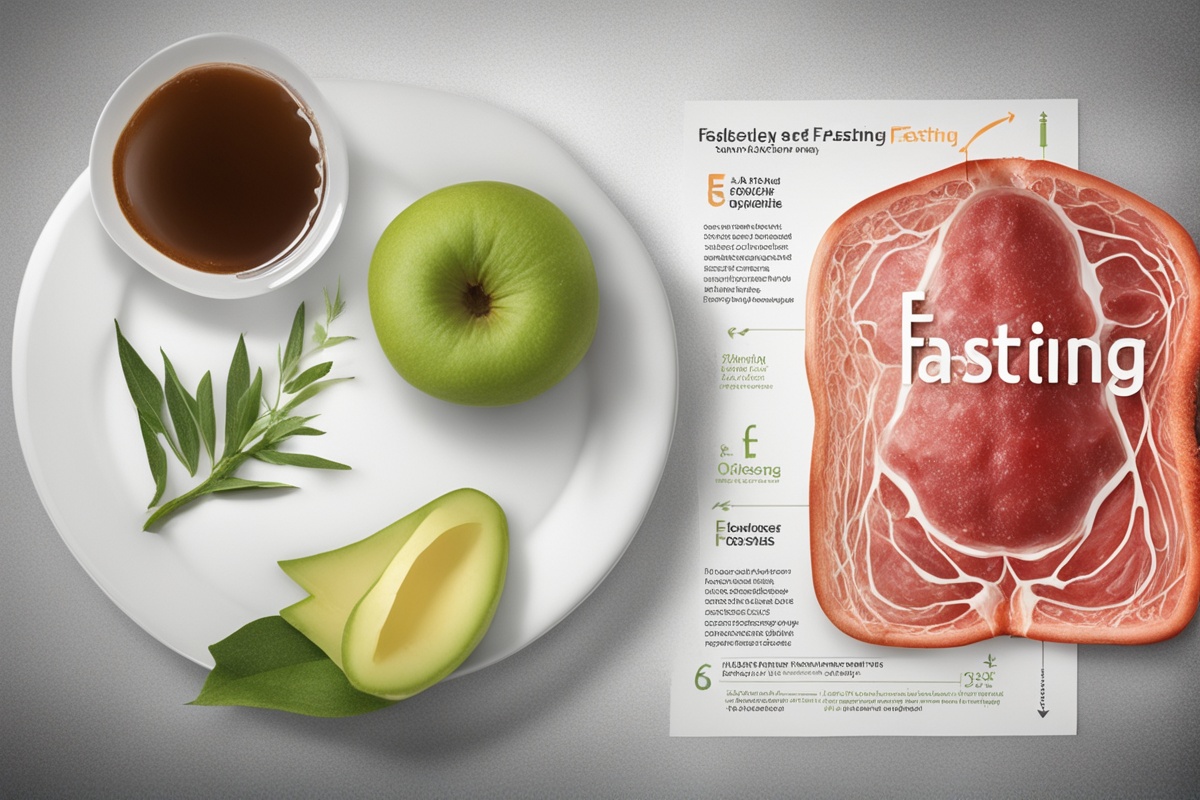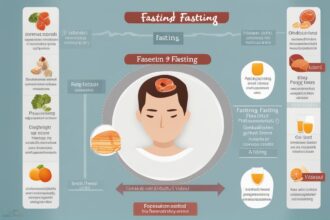Fasting has gained significant attention in recent years for its potential health benefits, ranging from weight loss to improved metabolic health. One of the lesser-known yet profoundly impactful benefits of fasting is its role in reducing cellular damage. By engaging in periods of caloric restriction or complete abstinence from food, the body initiates a series of protective mechanisms that combat oxidative stress and cellular deterioration. This post explores the science behind reducing cellular damage through fasting, diving into how this ancient practice can support longevity and overall well-being.
What Is Cellular Damage and Why Does It Matter?
Cellular damage occurs when the body’s cells are harmed by external or internal factors, such as free radicals, toxins, or chronic inflammation. Free radicals, unstable molecules produced during normal metabolic processes, can cause oxidative stress when their levels become too high. This stress damages DNA, proteins, and lipids within cells, contributing to aging, chronic diseases, and conditions like cancer, heart disease, and neurodegenerative disorders. Reducing cellular damage is crucial for maintaining optimal health and preventing premature aging. Fasting offers a natural way to address this issue by triggering processes that neutralize harmful agents and repair damaged cells.
How Fasting Reduces Oxidative Stress
Fasting plays a pivotal role in reducing cellular damage through fasting by lowering oxidative stress in the body. During fasting, the body shifts from using glucose as its primary energy source to burning fat through a process called ketosis. This metabolic switch reduces the production of reactive oxygen species (ROS), which are a primary cause of oxidative stress. Additionally, fasting enhances the body’s antioxidant defenses by upregulating the production of enzymes like superoxide dismutase and glutathione peroxidase. These antioxidants neutralize free radicals, preventing them from causing harm to cellular structures. By minimizing ROS and boosting natural defenses, fasting creates an environment where cells are less prone to damage.
Autophagy: The Cellular Cleanup Process Activated by Fasting
One of the most powerful mechanisms through which fasting aids in reducing cellular damage through fasting is autophagy. Autophagy, often described as the body’s “cellular recycling system,” is a process where cells break down and remove damaged or dysfunctional components. During fasting, the lack of nutrients signals the body to initiate autophagy, clearing out toxic proteins, damaged mitochondria, and other cellular debris. This cleanup process not only prevents the accumulation of harmful materials but also promotes the regeneration of healthy cellular components. Studies have shown that enhanced autophagy through fasting can protect against age-related diseases and improve overall cellular health. For more on autophagy, check out our detailed post on The Benefits of Autophagy During Fasting.
Fasting and Inflammation: A Key Connection to Cellular Health
Chronic inflammation is a major driver of cellular damage, contributing to a wide range of health issues, from arthritis to cardiovascular disease. Fasting has been shown to reduce systemic inflammation by lowering levels of pro-inflammatory cytokines and promoting anti-inflammatory pathways. When inflammation is kept in check, cells experience less stress and damage, allowing for better repair and maintenance. This anti-inflammatory effect is another reason why reducing cellular damage through fasting is so effective. To learn more about how fasting impacts inflammation, read our guide on Fasting for Inflammation Reduction.
The Role of Fasting in DNA Repair and Longevity
Fasting doesn’t just protect cells from damage; it also supports the body’s ability to repair damage that has already occurred. During fasting, cells activate DNA repair mechanisms, such as the upregulation of sirtuins—proteins that play a role in cellular health and longevity. Sirtuins help repair damaged DNA and protect against mutations that could lead to diseases like cancer. By enhancing these repair processes, fasting contributes to reducing cellular damage through fasting and may even extend lifespan. This connection between fasting, DNA repair, and longevity is a growing area of research with promising implications for aging and disease prevention. For additional insights on fasting and aging, explore our article on Fasting as an Anti-Aging Strategy.
Practical Tips for Incorporating Fasting to Reduce Cellular Damage
If you’re interested in harnessing the benefits of reducing cellular damage through fasting, it’s important to approach fasting safely and sustainably. Here are some practical tips to get started:
- Start with Intermittent Fasting: Begin with a simple 16:8 fasting schedule, where you fast for 16 hours and eat during an 8-hour window. This method is beginner-friendly and still promotes cellular benefits.
- Stay Hydrated: Drink plenty of water during fasting periods to support detoxification and cellular health.
- Focus on Nutrient-Dense Foods: When breaking your fast, prioritize whole, antioxidant-rich foods like fruits, vegetables, and healthy fats to further combat oxidative stress.
- Consult a Professional: If you have underlying health conditions or are new to fasting, consult a healthcare provider or nutritionist to ensure fasting is safe for you.
For a comprehensive guide on starting your fasting journey, check out our post on A Beginner’s Guide to Fasting. Additionally, learn about different fasting protocols in our article on Types of Fasting Methods.
Disclaimer: The information provided in this article is for educational purposes only and should not be considered medical advice. Fasting may not be suitable for everyone, particularly individuals with certain medical conditions, pregnant or breastfeeding women, or those with a history of eating disorders. Always consult with a healthcare professional before starting any fasting regimen or making significant changes to your diet or lifestyle. The authors and publishers of this content are not responsible for any adverse effects or consequences resulting from the use of the information provided.
References
- Mattson, M. P., & Wan, R. (2005). Beneficial effects of intermittent fasting and caloric restriction on the cardiovascular and cerebrovascular systems. Journal of Nutritional Biochemistry.
- Mizushima, N., & Komatsu, M. (2011). Autophagy: Renovation of cells and tissues. Nature Reviews Molecular Cell Biology.
- de Cabo, R., & Mattson, M. P. (2019). Effects of Intermittent Fasting on Health, Aging, and Disease. New England Journal of Medicine.
- Longo, V. D., & Mattson, M. P. (2014). Fasting: Molecular mechanisms and clinical applications. Cell Metabolism.
- Alirezaei, M., et al. (2010). Short-term fasting induces profound neuronal autophagy. Autophagy.
This content is for informational purposes only and not a substitute for professional advice.






